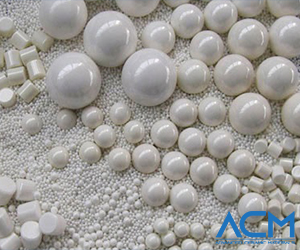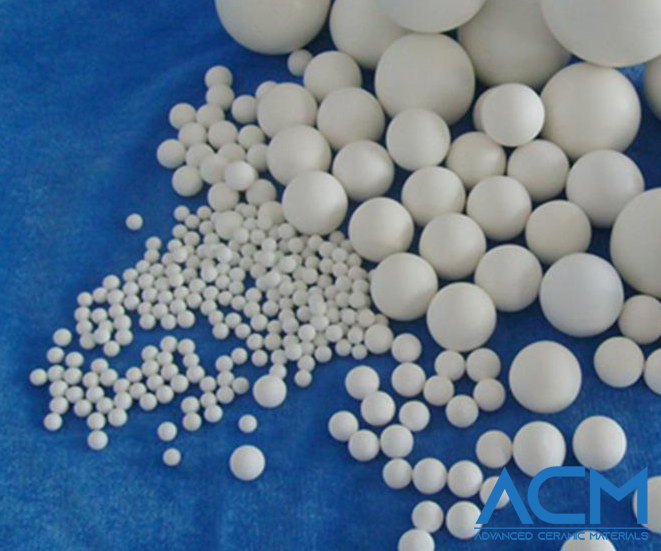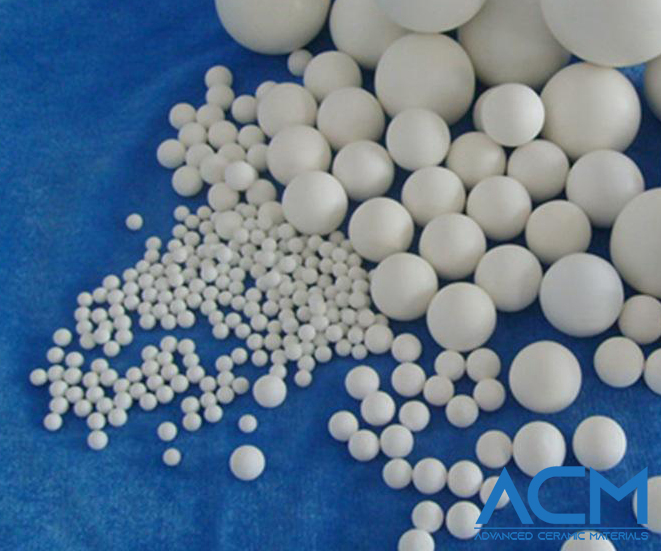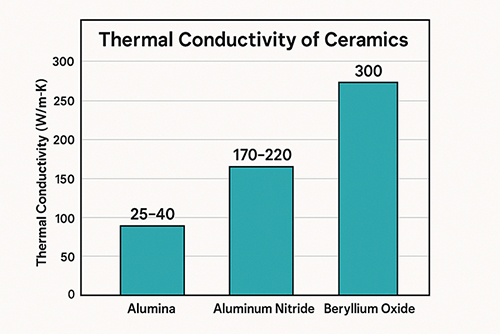Ball Mill Success: A Step-by-Step Guide to Choosing the Right Grinding Media

Introduction
In the intricate dance of ball milling, where raw materials are transformed into finely milled particles, the choice of grinding media emerges as a pivotal performance lever. This seemingly minor selection can dramatically influence the efficiency of the milling process, the quality of the output, and, ultimately, the bottom line. Whether in the realm of pharmaceuticals, ceramics, or materials science, the right grinding media can lead to breakthrough efficiencies and product quality.
This article serves as a comprehensive guide, designed to navigate you through the nuances of choosing the most suitable grinding media for your specific milling needs. With a focus on optimizing your milling operations, we aim to enhance both your process efficiency and the quality of your final product.
Understanding Ball Milling
Ball milling is a mechanical process used for the grinding and blending of materials to create finer particles. In this process, a powder mixture is placed in a rotating drum, along with grinding media such as balls. The kinetic energy imparted by the balls' motion breaks the powder into smaller pieces, making it a critical technique in various industries. In mining, it's used for ore processing, enabling the extraction of valuable minerals. The pharmaceutical industry relies on it to create uniform particle sizes, enhancing drug solubility and absorption. Ceramics benefit from ball milling by achieving fine, homogenous powders essential for high-quality pottery and tiles.

Rusch, Heather, creator, Public domain, via Wikimedia Commons
The choice of grinding media plays a crucial role in determining the efficiency of the ball milling process. Different materials, sizes, and densities of grinding media can significantly affect the energy transfer during milling, impacting the rate and uniformity of particle size reduction. Consequently, this choice directly influences product quality, affecting characteristics such as purity, particle size distribution, and surface area. Moreover, the selection of grinding media can lead to variations in operational costs, with factors such as media lifespan, energy consumption, and maintenance needs all contributing to the overall cost-effectiveness of the milling operation. Thus, understanding the interplay between grinding media and milling outcomes is essential for optimizing both the process and the product.
Read more: Grinding & Milling: 2 Most Basic Machining Processes
Types of Grinding Media
Grinding media, pivotal for the efficacy of the ball milling process, come in various materials, each offering unique characteristics and advantages tailored to specific applications.
Ceramic Balls: Composed of materials like silicon nitride, alumina, and zirconia, ceramic balls are favored for their exceptional hardness and resistance to wear, corrosion, and high temperatures. These properties make them ideal for applications requiring high purity and minimal contamination, such as in pharmaceuticals, food processing, and advanced ceramics manufacturing. Ceramic balls ensure the integrity of the milled product by preventing any material degradation and chemical interaction. Their lightweight nature also contributes to reduced energy consumption during milling.
Steel Balls: Predominantly made from carbon steel, stainless steel, or alloy steel, steel balls are renowned for their high density and impact strength. This makes them especially suitable for heavy-duty milling tasks in mining and cement production, where robust grinding media are required to break down hard materials efficiently. Steel balls are valued for their durability and cost-effectiveness, offering a balance between upfront costs and operational longevity. However, they may contribute to contamination in sensitive products, limiting their use in certain pharmaceutical and food applications.
Read more: Ceramic vs. Steel Grinding Balls: A Comprehensive Comparison for Industrial Use
Other Materials: Glass and plastic balls present niche applications, where chemical inertness and specific gravity considerations come into play. Glass balls are used in non-abrasive milling environments, typically where contamination must be avoided at all costs. Plastic balls, offering the lowest density among grinding media, are utilized in applications where minimal impact strength is required, and chemical compatibility is paramount.

Lưu Ly, Public domain, via Wikimedia Commons
Selecting the right grinding media involves careful consideration of the material to be milled, the desired final product characteristics, and specific process requirements, ensuring optimal milling efficiency and product quality.
Factors to Consider When Choosing Grinding Media
The selection of grinding media is a critical decision in the ball milling process, affecting not only the efficiency of the operation but also the quality of the final product. Several key factors must be considered to ensure the optimal performance and cost-effectiveness of the milling process.
Material Composition: The chemical composition of grinding media is paramount, as it directly impacts the product's purity and potential chemical reactions during the milling process. For instance, ceramic balls, made from materials like alumina or zirconia, are chemically inert, making them suitable for applications where contamination could compromise product quality, such as in pharmaceuticals or food production. In contrast, steel balls may introduce iron contamination but are preferred in applications where such addition does not affect the product, like in certain mineral processing operations.
Read more: Material Matters: How to Choose the Right Grinding Balls and Jars?
Size and Shape: The efficiency of the milling process and the final product's granularity are significantly influenced by the size and shape of the grinding media. Smaller media are capable of achieving finer particle sizes but may require longer milling times. Conversely, larger media offer faster size reduction but may not achieve the desired fineness. The shape of the media also plays a role, with spherical balls typically offering the most efficient milling due to their ability to roll and cascade effectively.
Hardness and Density: The hardness and density of the grinding media affect their wear rate and, consequently, their efficiency and durability. Harder and denser materials, such as certain ceramics and steels, can endure the milling process longer, reducing the frequency of media replacement and ensuring consistent milling conditions over time. However, overly hard media may damage the material being milled, highlighting the need for a balance based on the application.

Cost-Effectiveness: The initial cost of grinding media must be weighed against their operational lifespan and maintenance needs. While ceramic balls may have a higher upfront cost, their durability and lower wear rate can make them more cost-effective over time, reducing the overall operational costs. Steel balls, although initially cheaper, may require more frequent replacements, increasing long-term expenses.
| Factor | Impact | Key Considerations |
|---|---|---|
| Material | Product purity & reactions | Ceramic for purity, Steel for durability |
| Size & Shape | Milling efficiency & granularity | Smaller for finer sizes, Spherical for efficiency |
| Hardness & Density | Wear rate & durability | Choose balance to avoid damage |
| Cost | Initial vs. long-term expenses | Ceramic for value, Steel for lower initial cost |
This streamlined table efficiently encapsulates essential considerations for selecting grinding media, focusing on the most critical aspects to aid in decision-making.
Carefully considering these factors enables the selection of grinding media that best suits the specific requirements of the milling process, ensuring efficient operation, high-quality products, and cost-effective production.
Step-by-Step Selection Guide
Choosing the right grinding media for ball milling involves a strategic assessment to align with operational goals, material characteristics, and cost constraints. Here’s a step-by-step guide to facilitate this critical decision-making process:
Step 1. Assessing Milling Requirements:
The first step is a thorough analysis of the material to be milled. Consider its hardness, abrasiveness, and chemical properties. The desired characteristics of the final product, such as particle size, shape, and purity, must also be clearly defined. Additionally, evaluate the milling conditions, including the type of mill, speed, duration, and whether the process is wet or dry. These factors will influence the selection of the most suitable grinding media.
Step 2. Comparing Media Types:
With a clear understanding of the milling requirements, compare the different types of grinding media available. Ceramic balls offer high durability and minimal contamination, making them ideal for applications requiring high purity. Steel balls, recognized for their robustness, are better suited for heavy-duty milling tasks where material hardness is a significant factor. Consider the pros and cons of each media type in the context of your specific needs. Factor in material composition, size and shape, hardness, density, and cost-effectiveness. This comparison should align with the milling requirements and operational goals identified in the first step.
Step 3. Trial and Testing:
Before finalizing the decision, conduct trial runs with the selected grinding media. Testing allows for the evaluation of the media’s performance in real milling conditions, providing insights into wear rate, efficiency, and the impact on product quality. It also offers the opportunity to adjust the milling parameters to optimize the process. This step is crucial to ensure that the chosen grinding media meets the expected outcomes without unforeseen issues or costs.
| Step | Action | Key Considerations |
|---|---|---|
| 1 | Material & Conditions | Assess material properties and milling conditions (hardness, abrasiveness, wet/dry). |
| 2 | Media Comparison | Compare media (ceramic vs. steel) on composition, size, hardness, and cost. |
| 3 | Testing | Trial runs to evaluate media performance and adjust for optimization. |
This streamlined table efficiently encapsulates the essential steps and considerations for selecting grinding media, facilitating easier decision-making.
By following this guide, you can make an informed selection of grinding media, ensuring that it not only meets the specific requirements of your milling process but also contributes to the overall success and cost-efficiency of your operations.
Case Studies and Examples
In the pharmaceutical industry, a switch to ceramic grinding balls significantly improved the purity and quality of active pharmaceutical ingredients (APIs). A notable case involved a manufacturer facing contamination issues with steel balls, which affected the consistency and effectiveness of their medication. By transitioning to zirconia balls, they observed a marked improvement in product purity, with no detectable contamination, leading to enhanced drug performance and patient safety.
In mining, a copper processing plant struggled with inefficient ore grinding using standard steel balls, leading to poor mineral recovery rates. After analyzing their milling conditions, they opted for high-density steel balls, which provided the needed impact strength to break down the copper ore more efficiently. This change resulted in a noticeable increase in recovery rates, demonstrating how the right grinding media can directly impact operational success and profitability in mineral processing operations.
Conclusion
The strategic selection of grinding media is crucial for maximizing the efficiency and effectiveness of ball milling operations. As illustrated through various considerations and real-world examples, the right choice of grinding media can dramatically influence the quality of the final product, operational costs, and overall process success. Whether seeking to enhance product purity in pharmaceuticals or improve recovery rates in mineral processing, the implications of this decision extend far beyond simple cost considerations to impact the core outcomes of milling activities.
We encourage readers to leverage the outlined step-by-step guide to navigate the complexities of grinding media selection. By thoroughly assessing milling requirements, comparing the attributes of different media types, and conducting trial tests, you can make informed decisions that optimize your milling operations. This proactive approach ensures not only the achievement of desired milling results but also contributes to the sustainability and cost-effectiveness of production processes. Embrace this guide as a tool to enhance your milling strategies, ensuring that every choice in grinding media propels you closer to operational excellence and success.
Advanced Ceramic Materials (ACM), a leading ceramic supplier, plays a pivotal role in providing high-quality grinding balls that meet the diverse needs of these applications. By leveraging the insights provided and partnering with suppliers like ACM, industry professionals can ensure their grinding operations are not only effective but also cost-efficient and aligned with their specific requirements.
{{item.content}}
LEVE A REPLY
{{item.children[0].content}}
{{item.content}}
LEAVE A REPLY
SUBSCRIBE OUR NEWSLETTER
- Boron Nitride in Cosmetics: Enhancing Performance and Sensory Appeal
- Maximize MOCVD Yield and Purity with Hexagonal Boron Nitride Setters
- What Are the Advantages and Uses of Boron Nitride Ceramic Sheet?
- The Compression Annealing Advantage for Pyrolytic Boron Nitride
- Beyond Insulation: The Surprising Spectrum of Ceramic Thermal Conductivity














